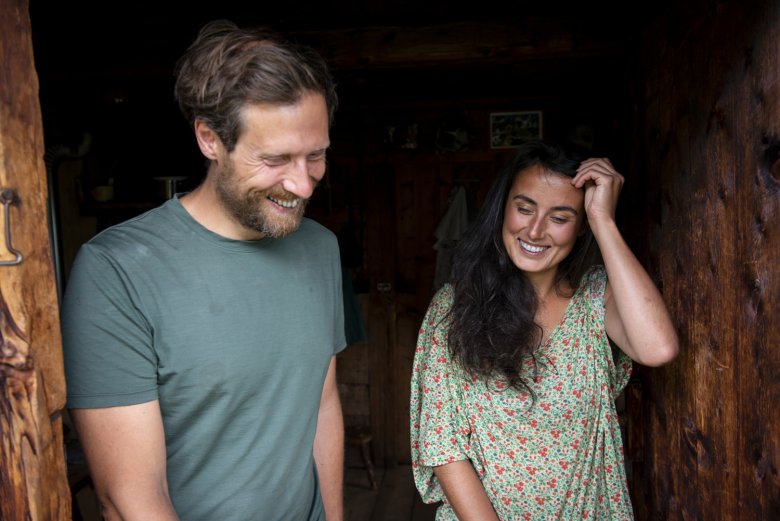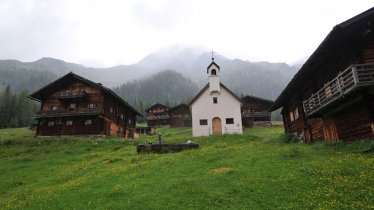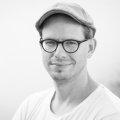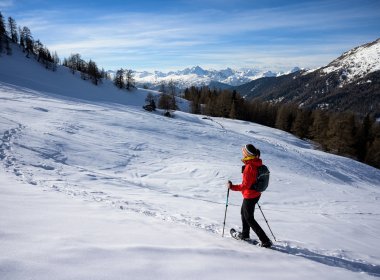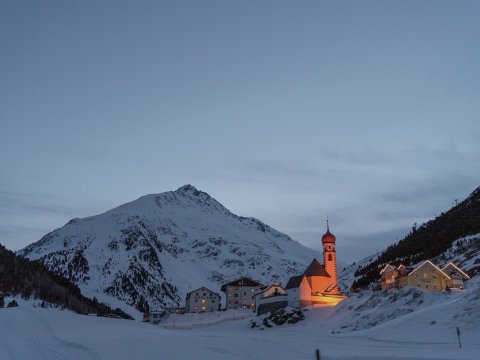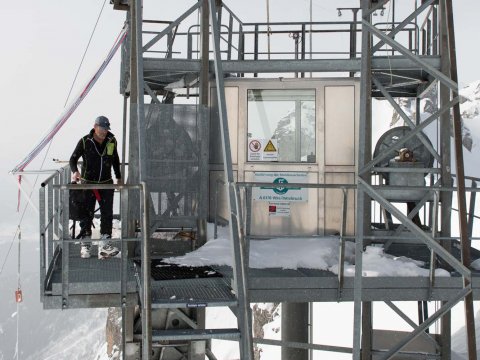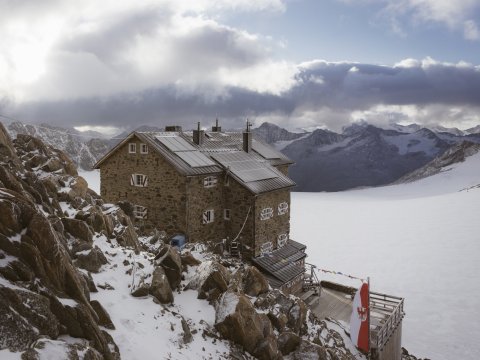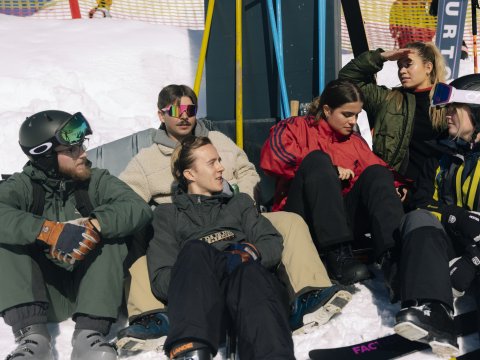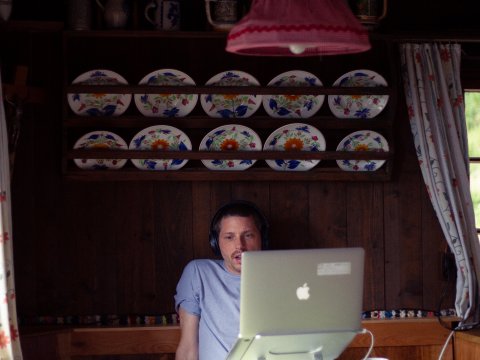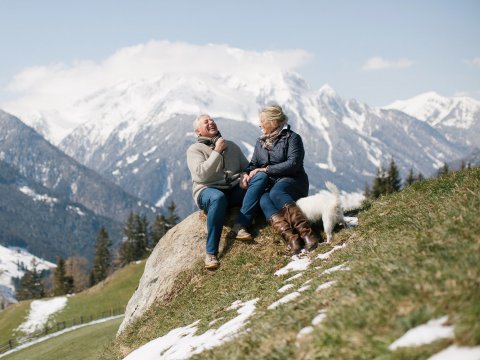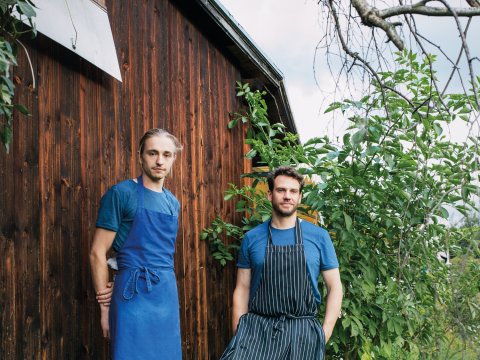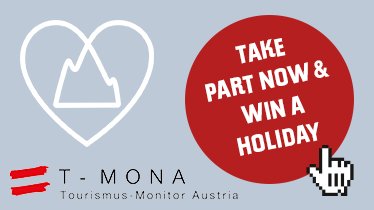Clean mountain air, breathtaking views, lush green meadows and in the…
Being Herdsmen for a Summer
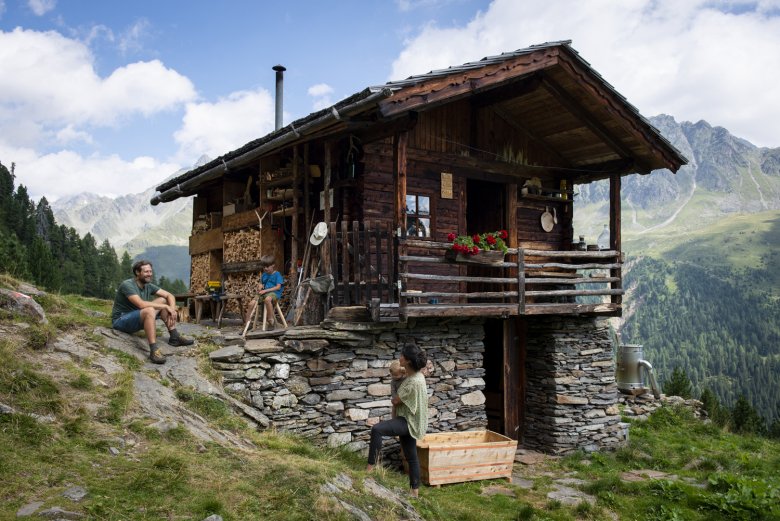
Smiling in amusement, Quirin observes the cow at his left hand side that is licking salt from his shin. He is sitting on a fence, holding his shepherd’s stick and a pair of binoculars around his neck. The then six-year old also watches his father to his right, who tries to catch a young bull with a lasso like a cowboy. All against the stirring backdrop of East Tirol skies and the rugged summits and peaks of Schobergruppe Range.
Bull catching is a dangerous operation. The young bull is wild, tough and surprisingly resilient. Janis needs to take great precaution with the horns. The 40-year old needs a few attempts before he is able to capture the bull with his lasso. The bull does not seem to appreciate the idea of getting a cowbell attached around its neck. This is another delicate operation. However, it looks quite skilled and seasoned. Not bad for a city dweller like Janis.
Janis Pönisch and his wife, Sarah Kofler, together with their two kids live in Munich, Germany. Sarah is a trained nurse, movement therapist and yoga teacher; Janis is interior designer, guitar maker and designer. Once a year, they leave their work and city life in the valley to spend two months on the Trelebitschalm, at 2,000 meters. Mountain clearings in the Austrian Alps are carefully maintained as summer pastures for cattle that is seasonally herded up to higher elevation meadows. Thousands of cows, goats, and sheep spend summers grazing on seasonal mountain pastures. In Austria, these carefully tended patches of mountain land are called ‘Alms’. From herding up until herding down, the family lives the life of simple herdsmen, in a tiny stone and log cabin. With an estimated floor space of 16 square meters, it feels like you have arrived at a little mountain oasis. There is a lack of Internet access, cell phone service, electricity supply and television. But there is an abundance of breathtaking mountain scenery, panoramic views, tranquillity and solitude. High in the Austrian Alps, at the heart of the Hohe Tauern National Park.
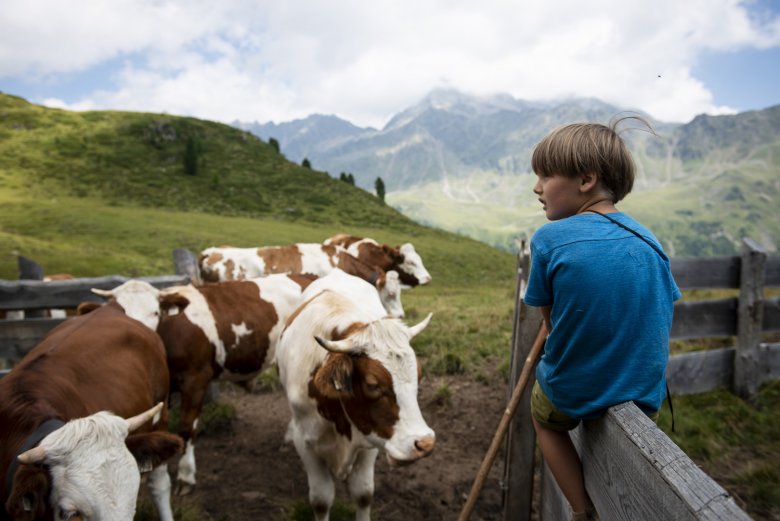
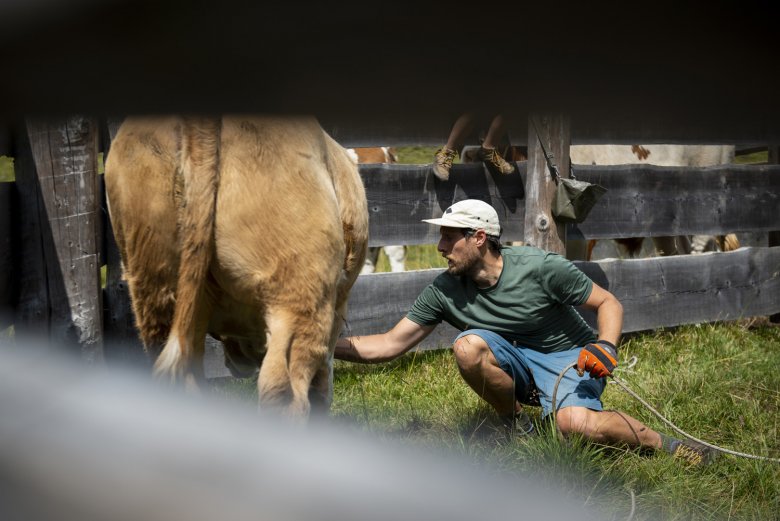
“I performed alternative service (in lieu of military service) on a children’s farm,” explains Janis. This was his only experience in dealing with animals before they rounded up the herds for Trelebitschalm for the first time, eight years ago. Which is not much; however, he had a lot of support from his wife Sarah in the beginning. “She’s actually a farmer’s wife,” he tells me. In fact, Sarah was raised on a mountain farm in Stronach, not far from here.
I spent a lot of time up here when I was a child.
The young bull is trotting back to the herd with his cowbell around his neck. We follow a steep path down to the hut, passing a waterfall and a few Swiss stone pine trees. These species is adapted to the harsh, mountain climate and stands up well to frost, windstorms and heavy snow, however, at this elevation where the Alpine tree line is reached, the trees are not taller than a Christmas tree for the living room. Sarah welcomes her husband and son to the small two-room hut with a large wrought iron pan filled with “Kaiserschmarrn”, a fluffy shredded pancake. She has tossed this icon of Austrian cuisine with confectioners’ sugar and fresh blueberries from the woods. Little Nino, then 15 months old, and Gustav, a friend of their older son Quirin from Munich who joined the family on their Alpine adventure for a few weeks, are ready to eat.
“I spent a lot of time up here when I was a child,” Sarah tells me while the rest of her family enjoys her sweet lunch. She used to visit the old herdsman who has been living here in this hut for 47 years. He only had one arm and he didn’t need anything but candles; he didn’t even want an earth closet. The simple and rustic furnishings of the hut are still the same: a wooden stove to cook on and to provide heat, a bench and a table, two beds, pans and pots hanging on the wall.
One day, when Quirin was a baby, Sarah and Janis heard that the old herdsman wasn’t able to tend cattle anymore because of his bad knee. The two visited him and suggested him to continue his work. He liked the idea. “It is very difficult to find potential herdsmen and caretakers for seasonal, high-elevation Alpine pastures. Thus he was very happy,” says Janis. Trelebitschalm is in possession of a farmers’ cooperative that uses the Alpine pastures for Alpine transhumance (the seasonal droving of grazing livestock between the valleys in winter and the high mountain pastures in summer as practiced in many places throughout Tirol and Austria). The cooperative gets funding if the summer highland pastures are managed for the benefit of the community herd. And they pay Sarah, the official herdswoman, and Janis Euro 2,500 for tending 34 cows, calves, oxes and young bulls. They don’t have to milk the cows, though, as their grazing cattle is either old or pregnant (classed as ‘dry cows’). This might not be a lot of money for two months’ work but Sarah and Janis don’t care. “This is actually our true life,” says Sarah. “And what we get in return is priceless anyway”.
We just enjoy the silence, there is no electricity, no disturbing sound, and no ticking clocks.
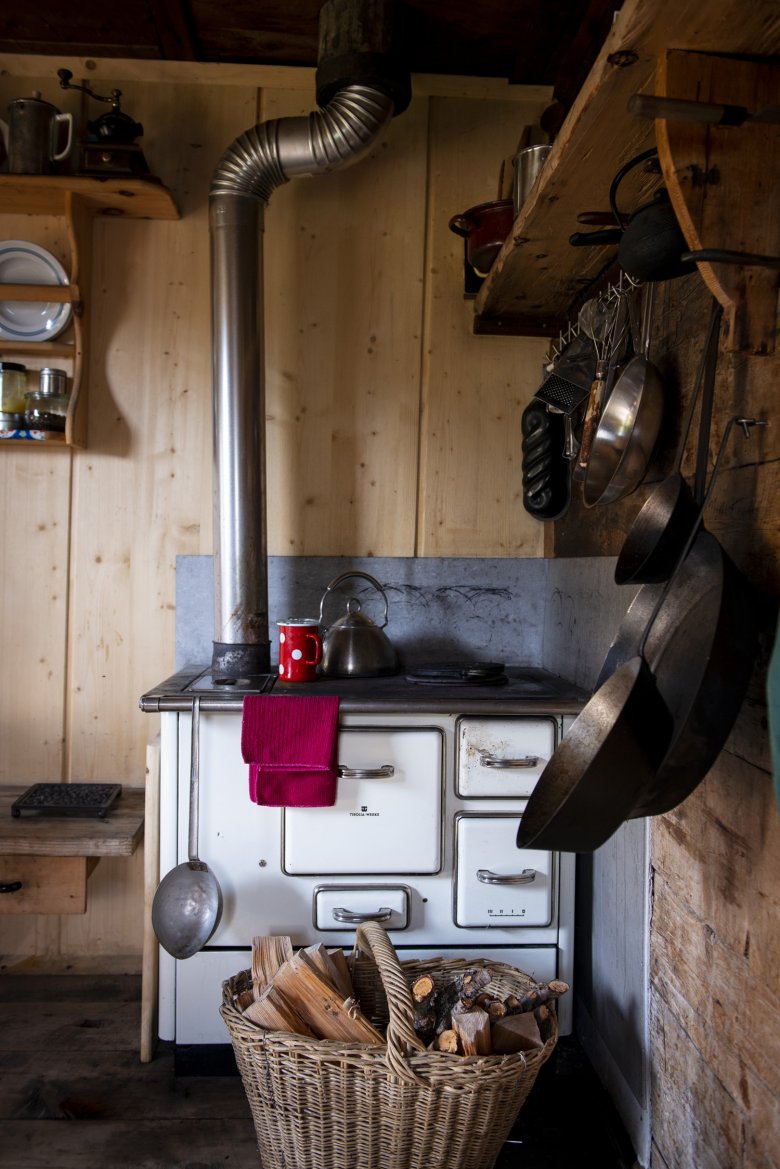
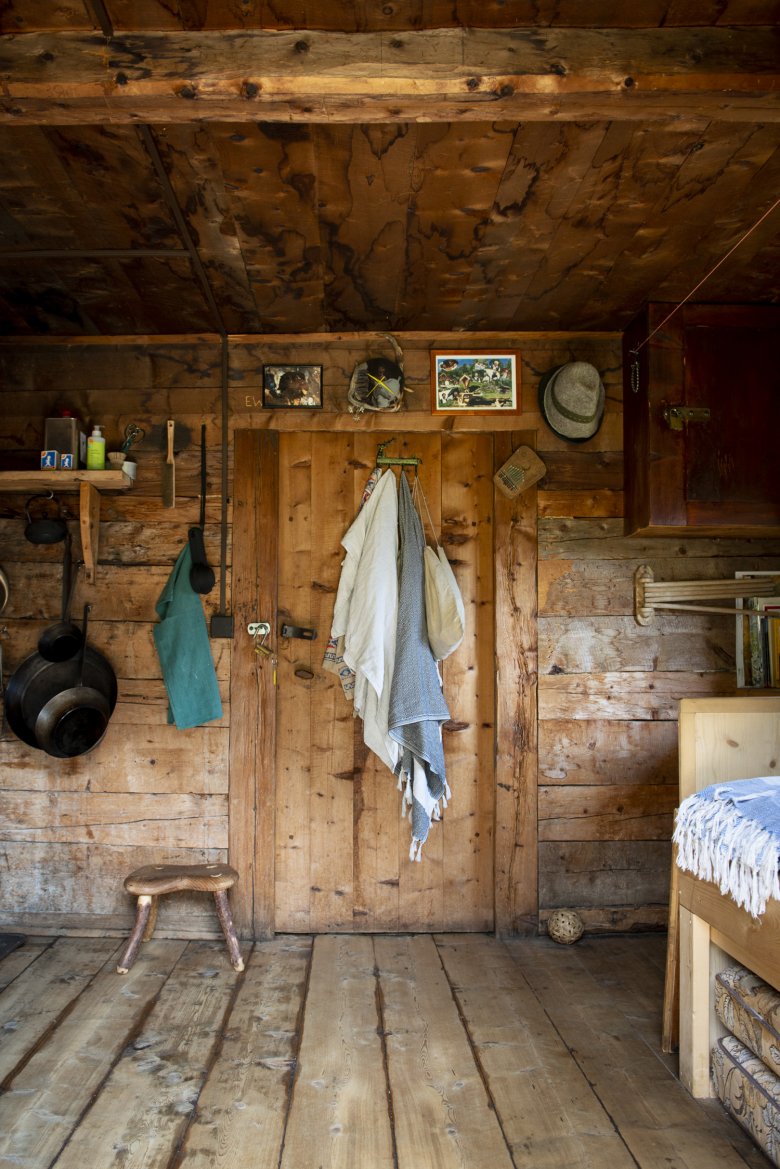
While Janis and Quirin are practising knots – in hazardous environments such as mountains, knots are very important – Janis tells me that before the kids were born they had spent their holidays in Croatia or Morocco. Up here on the ‘Alm’, secluded and isolated from the rest of the world, among Mother Nature, and far away from civilization, they have found the joys of living a simple life. “We just enjoy the silence, there is no electricity, no disturbing sound, and no ticking clocks,” says Janis. And Sarah adds: “That helps finding your inner rhythm and the circadian rhythm, the body’s internal clock that follows the sun. Up here, we live by the sun cycle. We go to bed when we are tired and we get up when we awake.” It’s only natural that Sarah has no smartphone.
Sarah tells me that she makes a big thing of everything up here: cooking, picking berries, tending cows, doing the dishes in the burbling water of the brook… Janis finds relaxation in working with wood. A DIY and hobbyist carpenter for years, he has made an elegant stool, a potty for little Nino, carved cars for Quirin, a bathtub for Sarah, spoons for visitors and other items of wood which can be admired around the hut.
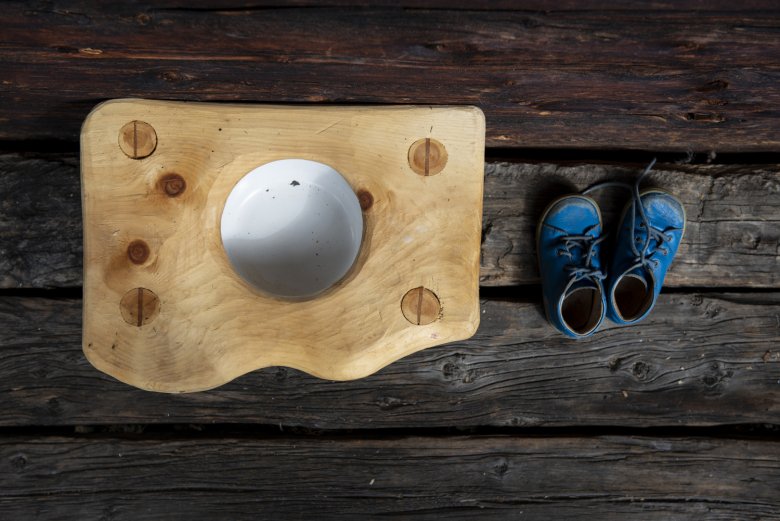
Every now and then, Sarah’s parents and brothers and sisters come to visit them, carrying garden-fresh vegetables and fruit up 300 vertical meters from the car park in Debanttal Valley to the ‘Alm’. Which is warmly welcomed by the two herdsmen: Growing herbs at an elevation of 2,000 meters above sea level in the mountains presents challenges, but growing vegetables is harder still. However, Sarah and Janis strive to be as self-sufficient as possible. Sarah is a true expert in that field. She knows everything about herbs and how to preserve self-grown food, she bakes bread and makes ravioli, and she even produces her own cleaners and toothpaste – from all natural ingredients such as baking soda, medicinal clay and coal tar.
Sarah and Janis consider these two summer months the essence of their life. Nevertheless, they like to return to Munich at the end of summer. They would not want it any other way. But they try to be mindful and bring the simple life of the ‘Alm’ into the hustle and bustle of the big city. Above all they try to respect their biological clock and to let go all the stress, all the busyness and rushing.
“It’s quite hard to leave each year in early September,” says Sarah. And as looking forward is the best part, the anticipation begins early and stretches for a solid six months before the summer actually arrives. In January.
